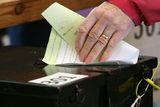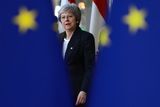System seems complicated but your vote really does matter

VOTING in the Super Friday elections have begun.
Polling stations in the local, European and by-elections will be open from 7am to 10pm.
You don't need a polling card to vote but don't forget your ID.
In the two constituencies where the bye-elections are taking place voters may receive up to three ballot papers depending on their eligibility to vote in the respective elections.
You do not have to be an Irish citizen to vote in a local election.
Irish and British citizens and Nationals of other EU Member States may vote at the European and local elections.
Non-EU citizens may vote at the local elections only.
Irish and British citizens only may vote at the Dáil bye-elections.
You must be over 18 years of age and you must live in the local electoral area.
In order to vote, you must be registered on the Register of Electors compiled every year by County and City Councils.
You may not vote in both a County Council and a City Council election.
You do not need a Polling Information Card to Vote. However, you may be asked to produce identification.
The prescribed photographic identification for voting are:
A passport;
A driving licence;
An employee identity card issued containing a photograph;
A student identity card issued by an educational institution and containing a photograph;
A travel document containing name and photograph;
A Bank or Savings or Credit Union book containing address in constituency or local electoral area;
A Public Services Card;
A Temporary Residence Certificate;
A Garda National Immigration Bureau card;
Or
the following items, accompanied by a further document which establishes the address of the holder in the constituency or local electoral area -
A cheque book;
A cheque card;
A credit card;
A birth certificate;
A marriage certificate.
****
Meanwhile Dr Theresa Reidy has an in-depth guide to our voting system:
Proportional Representation by the Single Transferable Vote (PR-STV) is the electoral system used at the European Parliament, local government and bye-elections in Ireland.
The electoral system is the process used to convert the votes cast by voters into seats. PR-STV is an unusual system and, in Europe, is used only by Ireland and Malta.
The major benefit of the system is that it is straight-forward for voters.
The ballot paper lists candidates in alphabetical order and includes the candidate's address, occupation, a photograph and a political party affiliation if they have one.
Voters rank candidates in order of their preference, 1, 2, 3. It is often said that while a person has one vote, they can offer many choices.
This gives voters a greater say in the selection of their public representatives, as they can express an opinion on each of the candidates.
There can be as many as 25 candidates on the ballot paper and voters may rank each one in order of their choice. In reality, many voters choose to express only a few preferences, often voting only as far as number 5 or 6.
The voting may be straightforward, but the counting could not be more complicated. The system requires candidates to reach a quota to be elected.
The quota is calculated using a formula based on the number of votes cast in that election and the number of seats in an electoral area.
For the European Parliament elections, 11 MEPs will be selected from across the three constituencies of Dublin, Ireland South, and Ireland Midlands-North West.
For the local elections, the country is divided into local electoral areas (LEAs) with a total of 949 councillors.
Between six and 10 councillors may be elected, depending on the size and population of the LEA.
When the polls close this evening, ballot boxes are sent to count centres. There are several stages in the counting process.
1. Votes will be sorted. European Parliament votes will be sent to the three count centres where those votes will be counted on Sunday. Local election and bye-election ballots will be counted in count centres across the country.
2. Ballots are counted and sorted by preference.
3. The quota is calculated.
4. Any candidate that reaches the quota is deemed elected.
5. If the candidate elected has extra votes in excess of the quota, these votes are redistributed to the remaining candidates in the field using the second (or next available choice) expressed on the ballot papers. A proportional formula is used.
6. If no new candidate is elected after the distribution of the surplus votes, the candidate with the fewest votes is eliminated and their votes are distributed in accordance with the second or next available preference expressed on their ballot paper.
7. This process of election, distribution of surpluses and elimination of candidates continues until all seats are filled.
The advantage of the PR-STV system is that if a voter's first preference candidate is eliminated early in the counting process, their vote carries on. Their further preferences will be used and will contribute to the election of subsequent candidates.
The electoral system is often criticised as being complicated and difficult to understand – but it is very fair, giving representation to small parties and Independents.
Candidates can often be elected with just a handful of votes more than the next highest candidate.
Your vote does matter; be sure to use it.
Dr Theresa Reidy is a lecturer in the Department of Government at University College Cork
Join the Irish Independent WhatsApp channel
Stay up to date with all the latest news















